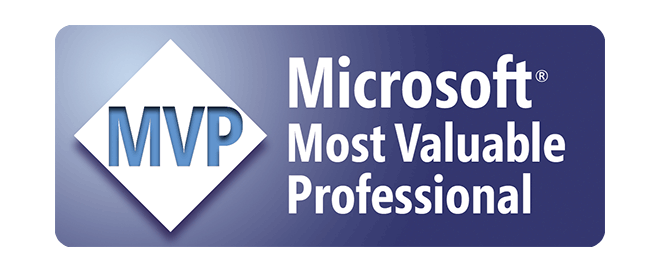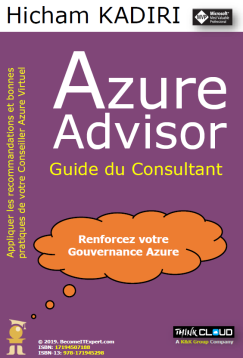
Introduction
Le nouvel examen de certification AZ-304 Microsoft Azure Architect Design vous permet de tester et valider vos compétences/votre expertise en tant que « Architecte Solutions Azure | Azure Solutions Architect ».
Note importante : l’examen AZ-304 n’est pas encore disponible, et sera disponible officiellement à partir de Mars/Avril 2020. Il remplacera l’examen de certification AZ-301 (Microsoft Azure Architect Design). Consultez cette page pour en savoir plus.
Publics concernés cette nouvelle Certification ?
La certification AZ-304 « Microsoft Azure Architecture Design » est destinée aux Architectes Cloud /Architectes Azure /Architectes Solutions Azure intervenant sur des projets d’Audit /Conseil /Design /Architecture /Sécurisation d’infrastructures Azure.
Lors de cet examen, vous serez évaluez sur un ensemble de compétences (transverses) dans les domaines suivants :
- Administration Azure
- Développement Azure
- DevOps.
Il est recommandé d’avoir des connaissances solides (Expert Level) dans au moins un de ces 3 domaines d’expertise.
Objectifs de l’examen de certification AZ-304
La liste des domaines de compétences /services /composants Azure sur lesquels vous serez évaluez lors de l’examen de certification AZ-304 est détaillée ci-dessous. Le % de chaque domaine de compétences représente le nombre de questions pendant l’examen :
Design Monitoring (10-15%)
- Design for cost optimization
- recommend a solution for cost management and cost reporting
- recommend solutions to minimize costs
- Design a solution for logging and monitoring
- determine levels and storage locations
- plan for integration with monitoring tools including Azure Monitor and Azure Sentinel
- recommend appropriate monitoring tool(s) for a solution
- choose a mechanism for event routing and escalation
- recommend a logging solution for compliance requirements
- NOTE: resource-specific monitoring. This objective should ONLY cover the all-up holistic monitoring strategy
Design Identity and Security (25-30%)
- Design authentication
- recommend a solution for single-sign on
- recommend a solution for authentication
- recommend a solution for Conditional Access, including multi-factor authentication
- recommend a solution for network access authentication
- recommend a solution for a hybrid identity including Azure AD Connect and Azure AD Connect Health
- recommend a solution for user self-service
- recommend and implement a solution for B2B integration
- NOTE: federation with ADFS
- Design authentication
- choose an authentication approach
- recommend a hierarchical structure that included management groups, subscriptions and resource groups
- recommend an access management solution including RBAC policies, access reviews, Privileged Identity Management (PIM), Azure AD Identity Protection, Just In Time (JIT) access
- Design governance
- recommend a strategy for tagging
- recommend a solution for using Azure Policy
- recommend a solution for using Azure Blueprint
- Design security for applications
- recommend a solution that included KeyVault
- what can be stored in KeyVault
- KeyVault operations
- KeyVault regions
- recommend a solution that includes Azure AD Management Identities
- recommend a solution for integrating applications into Azure AD
- recommend a solution that included KeyVault
Design Data Storage (15-20%)
- Design a solution for databases
- select an appropriate data platform based on requirements
- recommend database service tier sizing
- recommend a solution for database scalability
- recommend a solution for encrypting data at rest, data in transmission, and data in use
- NOT: data caching
- NOT: MariaDB, PostgreSQL, MySQL
- Design data integration
- recommend a data flow to meet business requirements
- recommend a solution for data integration, including Azure Data Factory, Azure Databricks, Azure Data Lake, Azure Synapse Analytics
- Select an appropriate storage account
- choose between storage tiers
- recommend a storage access solution
- recommend storage management tools
Design Business Continuity (10-15%)
- Design a solution for backup and recovery
- recommend a recovery solution for Azure hybrid and on-premises workloads that meets recovery objectives (RTO, RLO, RPO)
- design an Azure Site Recovery solution
- recommend a site recovery replication policy
- recommend a solution for site recovery capacity
- recommend a solution for site failover and fallback (planned / unplanned)
- recommend a solution for the site recovery network
- recommend a solution for recovery in different regions
- recommend a solution for Azure Backup management
- design a solution for data archiving and retention
- recommend storage types and methodology for data archiving
- identify business compliance requirements for data archiving
- identity requirements for data archiving
- identify SLA(s) for data archiving
- recommend a data retention policy
- Design for high availability
- recommend a solution for application and workload redundancy, including compute, database, and storage
- recommend a solution for autoscaling
- identify resources that require high availability
- identify storage types for high availability
- recommend a solution for geo-redundancy of workloads
Design Infrastructure (25-20%)
- Design a compute solution
- recommend a solution for compute provisioning
- determine appropriate compute technologies, including virtual machines, App Services, Service Fabric, Azure Functions, Windows Virtual Desktop, and containers
- recommend a solution for containers
- AKS versus ACI and the configuration of each one
- recommend a solution for automating compute management
- NOT: monitoring, backups, recovery, availability, security, storage; VMWare
- Design a network solution
- recommend a solution for network addressing and name resolution
- recommend a solution for network provisioning
- recommend a solution for network security
- private endpoints
- firewalls
- gateways
- etc.
- recommend a solution for network connectivity to the Internet, on-premises networks, and other Azure virtual networks
- recommend a solution for automating network management
- recommend a solution for load balancing and traffic routing
- Design an application architecture
- recommend a microservices architecture including Event Grid, Event Hubs, Service Bus, Storage Queues, Logic Apps, Azure Functions, and webhooks
- recommend an orchestration solution for deployment of applications including ARM templates, Logic Apps, or Azure Functions
- select an automation method
- choose which resource or lifecycle steps will be automated
- design integration with other sources such as an ITSM solution
- recommend a solution for monitoring automation
- recommend a solution for API integration
- design an API gateway strategy
- determine policies for internal and external consumption for APIs
- recommend a hosting structure for API management
- recommend when and how to use API Keys
- Design migrations
- assess and interpret on-premises servers, data, and applications for migration
- recommend a solution for migrating applications and VMs
- recommend a solution for migration of databases
- determine migration scope, including redundant, related, trivial, and outdated data
Pour afficher la liste complète des objectifs de l’examen, veuillez consulter le PDF officiel des objectifs de l’examen AZ-301 de Microsoft. Actuellement, il est publié dans le même document que les objectifs AZ-301, jusqu’à la sortie officielle de l’examen AZ-304 prévue fin Mars /début Avril 2020.
Cours /Formations pour Azure Architect Design AZ-304
Comme mentionné précédemment, l’examen de certification AZ-304 verra le jour qu’à partir de fin Mars /début Avril 2020, aucune formation /guide de préparation n’est dipsonible au moment de la rédaction du présent post.
Je publierai (courant les mois à venir) un autre post avec tous les liens utiles /cours /formations pouvant vous aider à préparer cette nouvelle certification Azure.
A bientôt,




